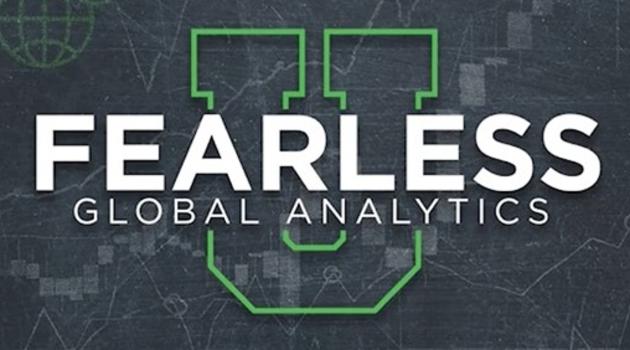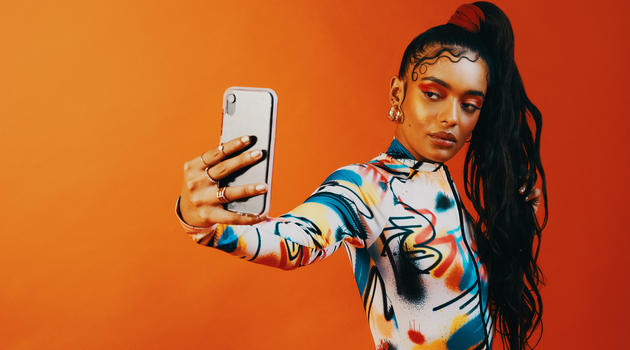Tech & Digital PR Predictions for 2022
By Rob Stone, Digital, Strategy and Innovation Director, 3MZ
01/26/22

Over the years, predicting what is coming up in the next 12 months in digital and tech within PR and marketing has become both easier and harder at the same time. It’s become harder to predict what is coming because there is just so much innovation happening in so many different sectors. It can be difficult to know what to focus on and where to apply your resources. However, in many ways it has also become easier - the general trends are clear for everyone to see because to really make a difference new technology needs significant investment and multi-year adoption cycles.
With that in mind, I have explored two big predictions for 2022 as well as a collection of other predictions that are smaller but will still have significant impact.
Web3 Goes Mainstream
Crypto. NFTs. Blockchain. Metaverse. Decentralisation. This new iteration of the web promises a lot and 2021 was an interesting foundation year for some of this tech. We started to see big brands enter the space with Adidas launching a very smart NFT collaboration with BAYC that quickly become one of the most traded of the year. Budweiser and Pepsi launched NFT projects, football teams started launching crypto tokens that allow fans to get involved in club decisions, Nike bought a leading metaverse/NFT brand and hordes of brands started descending on metaverse platforms Decentraland and Sandbox to see what all the fuss was about.
The first week of 2022 saw over $1.2 billion in sales of NFTs and daily sales are now beating the volume from the entire first half of 2021, a clear indication that adoption of this space is accelerating at a rapid pace.
However, the education gap for this technology is still huge. I still read endless ‘right click save’ type comments about NFTs and they show both a misunderstanding of the technology and just how far we are from wider adoption. Even those in tech circles can be very sceptical, often, I suspect, driven by a need to protect Web 2.0 platforms that have been so good for them. I still see a lot of eyes glaze over when I attempt to explain the latest token airdrop, 10k generative project launch or a hot new DAO entering the scene. At 3MZ we’ll be focusing on bridging that gap through internal and client education during Q1.
Web3 enables a lot that is positive for brands. Decentralisation and creative freedom is a big part of the appeal and allows brands to reach new audiences while championing artists and other creatives. Community is a central feature too – for the first time the relationship between a brand and its fans can be two-way. When an NFT project does well, its community also grows and gets rewarded.
In Web 2.0 brands must fight incredibly hard in an increasingly crowded market to gain and then retain engagement on platforms like Instagram or TikTok. The mutual value creation in Web3 means that engagement is heavily incentivised even for things that typically have niche appeal, so participants become genuine, invested advocates and both parties actively support each other. Having seen various communities across 15 years of iterations of the web, some of the best and most engaged communities I have ever seen have been in Web3 projects.
We started to get our first metaverse and NFT briefs in the second half of last year and this is something I expect to pick up pace as we move further in to 2022.
eCommerce, Shoppable Content and Direct To Consumer Grow (a lot)
The events of the last two years have naturally grown eCommerce as people looked to order online instead of going into physical stores. This is a transition that was already happening, but the pandemic accelerated its uptake and ordering a much wider variety of products online has now become second nature to many, especially in the UK. Global eCommerce grew by 30% last year and nearly 90% of shoppers in the UK now use Amazon, with over 15 million UK households having access to Amazon Prime.
These shifts in behaviour will lead to obvious changes in the way campaigns are run. PR has at times had an attribution problem – being able to directly attribute sales to PR and some social media activity has been the holy grail for several years. As brands increasingly take an omnichannel approach to marketing and tech platforms develop their shoppable content and eCommerce functionality, they will be able to take advantage of a more trackable direct to consumer approach via integrated campaigns.
Innovation on the platforms we use will help drive this increase even further, with features like ITV’s Shopping TV, which lets viewers buy on-screen products while they’re watching TV shows or Google’s shoppable feature which invites users to shop the brands they see while watching content without interrupting their viewing. Reducing the friction for buying things people see in their regular shows and other content, especially for the monetisation of influencer content, will drive greater adoption via integrated campaigns.
All of these things need good storytelling and great content, which is where I predict PR can play a critical role. Developing omnichannel campaigns with an immersive story, clever but clear branding and a genuine human connection provides PR with an exciting playground in which to innovate.
Other developments
While those are my big bets for 2022, there are a few others that may already be on the radar or experiencing a new wave of uptake and are also worthy of inclusion:
The first is the continued rise of AI in marketing. The accessibility and affordability of AI is increasing rapidly, and new innovations and products are springing up all the time. You can now use AI to write better email subject lines and website copy, drive greater and more meaningful personalisation for digital comms and use data to both identify and instantly react to online trends. We’ll see wider adoption in 2022, but PR will also add creative ideas and applications to their use cases, coming up with campaigns that make use of the technology in clever, funny and thought-provoking ways.
VR and AR have been around for a while now, but I think both deserve an honourable mention here. PR campaigns have started to use more advanced technology to aid storytelling, something we have been passionate about at 3MZ for several years. The Oculus was a very popular Christmas present, and in the time since nearly 2m people have downloaded the Oculus app. Making tech like this more accessible is key to wider adoption and the creatives in our industry will be looking at VR and AR as a more serious, broader reach storytelling platform rather than a novelty experience.
Data privacy is also likely to be an important concern in 2022. As increasing data collection and personalisation puts more of our data out there, marketers, 3rd parties and the platforms need to ensure that data is kept safe and only used in a meaningful, additive way. I think we’ll see a shift in focus in the use of data to tailor experiences and improve engagement beyond just optimising for advertising revenue and into entertainment and hyper-personal experiences. Sadly it’s also inevitable that there will be more large-scale security breaches as organisations struggle to keep up with increasingly sophisticated methods employed by those looking to use our data for illegitimate purposes.
Finally, the big tech platforms will have an obvious and wide-ranging impact on tech in 2022. Facebook’s Meta announcement came as something of a surprise but was a strong indication of where it is placing its time and resources in the coming years. TikTok matured and accelerated in 2021 and its new creator marketplace could enable a wide range of brands to reach a younger audience with a direct-to-consumer approach. There is probably a lot in store that we’re not expecting, but we will need to adapt and adopt accordingly.
Overall 2022 promises to be an exciting year with a lot of opportunity for innovation and creativity!



